-
 Bitcoin
Bitcoin $115000
0.12% -
 Ethereum
Ethereum $3701
4.50% -
 XRP
XRP $3.081
2.99% -
 Tether USDt
Tether USDt $0.0000
-0.01% -
 BNB
BNB $767.9
1.45% -
 Solana
Solana $169.5
3.13% -
 USDC
USDC $0.9999
0.01% -
 Dogecoin
Dogecoin $0.2106
4.30% -
 TRON
TRON $0.3334
1.62% -
 Cardano
Cardano $0.7564
2.54% -
 Stellar
Stellar $0.4165
0.76% -
 Hyperliquid
Hyperliquid $38.75
0.25% -
 Sui
Sui $3.593
3.00% -
 Chainlink
Chainlink $17.08
3.59% -
 Bitcoin Cash
Bitcoin Cash $573.6
4.35% -
 Hedera
Hedera $0.2508
-0.84% -
 Avalanche
Avalanche $23.07
6.46% -
 Ethena USDe
Ethena USDe $1.001
-0.02% -
 Litecoin
Litecoin $120.8
8.17% -
 UNUS SED LEO
UNUS SED LEO $8.943
-0.32% -
 Toncoin
Toncoin $3.400
-5.60% -
 Shiba Inu
Shiba Inu $0.00001255
1.54% -
 Uniswap
Uniswap $9.908
6.32% -
 Polkadot
Polkadot $3.718
2.10% -
 Monero
Monero $303.0
-0.74% -
 Dai
Dai $0.9999
-0.02% -
 Bitget Token
Bitget Token $4.392
0.91% -
 Cronos
Cronos $0.1403
6.31% -
 Pepe
Pepe $0.00001076
1.13% -
 Aave
Aave $267.2
1.80%
How do stablecoins maintain price stability?
Stablecoins maintain stability through fiat-collateralized, crypto-collateralized, algorithmic, and hybrid methods, each using unique mechanisms to ensure a stable value in the volatile crypto market.
Apr 14, 2025 at 01:07 am
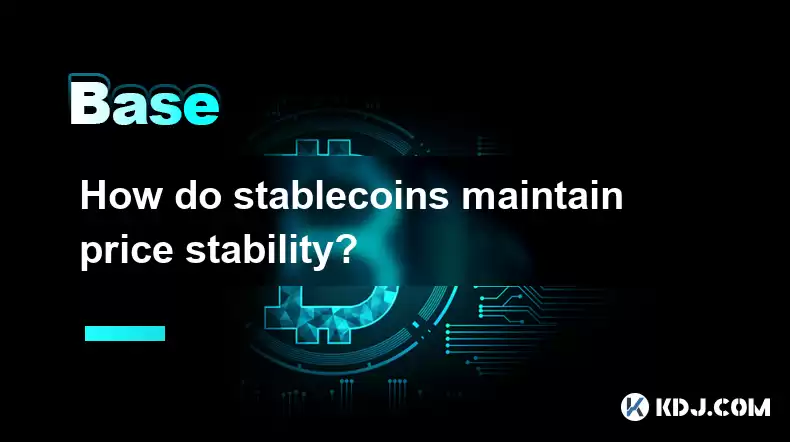
Stablecoins are a type of cryptocurrency designed to maintain a stable value relative to a specific asset or basket of assets. This stability is crucial for their use as a medium of exchange, a store of value, or a unit of account within the volatile cryptocurrency market. In this article, we will explore the various mechanisms stablecoins use to maintain their price stability, focusing on the different types of stablecoins and their unique approaches.
Types of Stablecoins
Stablecoins can be broadly categorized into four types: fiat-collateralized, crypto-collateralized, algorithmic, and hybrid. Each type uses a different method to maintain stability, and understanding these methods is essential to grasp how stablecoins work.
Fiat-collateralized stablecoins are pegged to a fiat currency like the US dollar. They maintain their value by holding an equivalent amount of the fiat currency in reserve. Examples include Tether (USDT) and USD Coin (USDC).
Crypto-collateralized stablecoins use other cryptocurrencies as collateral to maintain their peg. These stablecoins often require over-collateralization to account for the volatility of the crypto assets used as collateral. DAI, issued by MakerDAO, is a prominent example of this type.
Algorithmic stablecoins rely on algorithms to control the supply of the stablecoin in response to changes in demand. They do not use any collateral but instead adjust the coin's supply to maintain its peg. Examples include Ampleforth (AMPL) and TerraUSD (UST).
Hybrid stablecoins combine elements of both collateralized and algorithmic mechanisms. They might use collateral to back the stablecoin while also employing algorithms to adjust supply. Frax (FRAX) is an example of a hybrid stablecoin.
Fiat-Collateralized Stablecoins
Fiat-collateralized stablecoins maintain their price stability by holding a reserve of the underlying fiat currency. For instance, if a stablecoin is pegged to the US dollar, the issuing entity must hold an equivalent amount of US dollars in reserve for each stablecoin in circulation.
Transparency and audits are crucial for these stablecoins. Regular audits are conducted to ensure that the reserves match the circulating supply. For example, Tether Limited publishes quarterly reports detailing its reserves.
Redemption mechanisms allow users to exchange their stablecoins for the underlying fiat currency at a 1:1 ratio. This redemption right helps maintain trust in the stablecoin's peg.
Regulatory compliance is another factor that contributes to the stability of fiat-collateralized stablecoins. Issuers must adhere to financial regulations, which adds a layer of credibility and stability.
Crypto-Collateralized Stablecoins
Crypto-collateralized stablecoins use other cryptocurrencies as collateral to maintain their peg. This method is often used when issuers want to avoid the regulatory complexities of dealing with fiat currencies.
Over-collateralization is a key feature of crypto-collateralized stablecoins. For example, DAI requires users to deposit more Ethereum than the value of DAI they wish to mint. This over-collateralization helps absorb price fluctuations in the collateral.
Liquidation mechanisms are used to maintain stability. If the value of the collateral falls below a certain threshold, the collateral is liquidated to cover the stablecoin's value. This process ensures that the stablecoin remains pegged to its target value.
Decentralized governance plays a role in some crypto-collateralized stablecoins. For instance, MakerDAO's governance token, MKR, allows holders to vote on changes to the system's parameters, which can affect the stability of DAI.
Algorithmic Stablecoins
Algorithmic stablecoins do not rely on any collateral but instead use algorithms to adjust the supply of the stablecoin in response to market demand. This approach aims to maintain the stablecoin's peg without the need for reserves.
Rebasing is a common mechanism used by algorithmic stablecoins. For example, Ampleforth (AMPL) adjusts the number of tokens in each wallet daily based on the deviation from its target price. This rebasing helps to stabilize the coin's value.
Seigniorage is another method used by some algorithmic stablecoins. When the stablecoin's price rises above its peg, new tokens are minted and sold, increasing the supply and pushing the price back down. Conversely, when the price falls below the peg, tokens are bought back and burned, reducing the supply and increasing the price.
Rebalancing can also be employed. For instance, TerraUSD (UST) uses a sister token, Luna, to rebalance its supply. When UST's price deviates from its peg, Luna is either minted or burned to adjust UST's supply and restore its peg.
Hybrid Stablecoins
Hybrid stablecoins combine elements of both collateralized and algorithmic mechanisms to maintain their peg. This approach aims to leverage the strengths of both methods while mitigating their weaknesses.
Collateral and algorithmic adjustments are used in tandem. For example, Frax (FRAX) uses a combination of US dollar collateral and an algorithmic mechanism to adjust its supply. The proportion of collateral to algorithmic backing can change based on market conditions.
Stability pools are sometimes used to enhance stability. These pools hold a mix of collateral and the stablecoin itself, which can be used to absorb price shocks and maintain the peg.
Governance mechanisms can also play a role in hybrid stablecoins. For instance, the community governing Frax can vote on changes to the system's parameters, which can affect how the stablecoin maintains its stability.
Challenges and Considerations
Maintaining price stability is not without challenges. Each type of stablecoin faces unique hurdles that can impact its ability to maintain its peg.
Regulatory scrutiny is a significant challenge for fiat-collateralized stablecoins. Regulatory changes can affect their ability to hold reserves and operate effectively.
Volatility of collateral is a concern for crypto-collateralized stablecoins. If the value of the collateral drops significantly, it can lead to instability and potential liquidation events.
Algorithmic risks are inherent in algorithmic stablecoins. If the algorithms fail to adjust supply correctly, the stablecoin can lose its peg, leading to significant price fluctuations.
Balancing mechanisms in hybrid stablecoins can be complex to manage. Ensuring that the right balance between collateral and algorithmic adjustments is maintained is crucial for stability.
By understanding these mechanisms and challenges, users can better appreciate how stablecoins maintain their price stability and the factors that influence their effectiveness.
Frequently Asked Questions
Q: Can stablecoins be used for international transactions?
A: Yes, stablecoins can be used for international transactions. They offer a stable value that is not subject to the volatility of traditional cryptocurrencies, making them suitable for cross-border payments. Additionally, stablecoins can often be transferred more quickly and at lower costs than traditional banking methods.
Q: What happens if a stablecoin loses its peg?
A: If a stablecoin loses its peg, its value deviates from the target asset. This can lead to a loss of confidence among users and potential price instability. Depending on the type of stablecoin, mechanisms such as liquidation, rebasing, or seigniorage may be employed to restore the peg. In extreme cases, the stablecoin may fail to regain its peg, leading to significant losses for holders.
Q: Are stablecoins subject to inflation?
A: Stablecoins pegged to fiat currencies can be indirectly affected by inflation in the underlying currency. For example, if a stablecoin is pegged to the US dollar and the dollar experiences inflation, the purchasing power of the stablecoin may decrease. Algorithmic stablecoins, on the other hand, are not directly affected by inflation but can be influenced by changes in demand and supply.
Q: How do stablecoins handle large-scale withdrawals?
A: Stablecoins handle large-scale withdrawals differently based on their type. Fiat-collateralized stablecoins rely on their reserves to meet redemption requests. If there is a large-scale withdrawal, the issuer must ensure that sufficient reserves are available. Crypto-collateralized stablecoins may need to liquidate collateral to meet withdrawals, which can be challenging if the collateral's value is volatile. Algorithmic stablecoins adjust their supply to manage withdrawals, which can lead to price fluctuations if not managed correctly. Hybrid stablecoins use a combination of these methods to handle large-scale withdrawals effectively.
Disclaimer:info@kdj.com
The information provided is not trading advice. kdj.com does not assume any responsibility for any investments made based on the information provided in this article. Cryptocurrencies are highly volatile and it is highly recommended that you invest with caution after thorough research!
If you believe that the content used on this website infringes your copyright, please contact us immediately (info@kdj.com) and we will delete it promptly.
- Solana Memecoin Launchpads: A Wild Ride with LetsBONK.fun Leading the Charge
- 2025-08-05 17:30:12
- Crypto Volatility & Token Unlocks: Navigating the Storm
- 2025-08-05 16:30:13
- SUI Traders Eye Discount: Is Now the Time to Buy?
- 2025-08-05 16:30:13
- Bitcoin Price in August: Will the BTC Rally Continue?
- 2025-08-05 17:35:12
- Decentralized Perpetuals Soar: Volume Hits All-Time High, Leaving CEXs in the Dust?
- 2025-08-05 16:50:12
- Decoding MYCUSD: Crypto Forecasting for Digital Asset Success
- 2025-08-05 16:50:12
Related knowledge
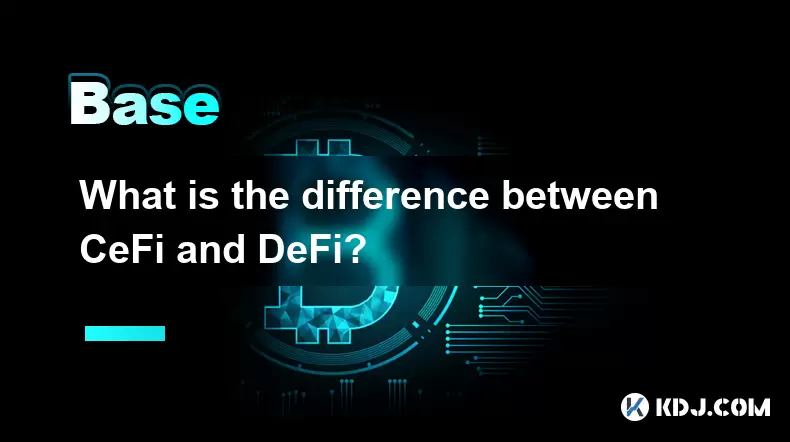
What is the difference between CeFi and DeFi?
Jul 22,2025 at 12:28am
Understanding CeFi and DeFiIn the world of cryptocurrency, CeFi (Centralized Finance) and DeFi (Decentralized Finance) represent two distinct financia...

How to qualify for potential crypto airdrops?
Jul 23,2025 at 06:49am
Understanding What Crypto Airdrops AreCrypto airdrops refer to the distribution of free tokens or coins to a large number of wallet addresses, often u...
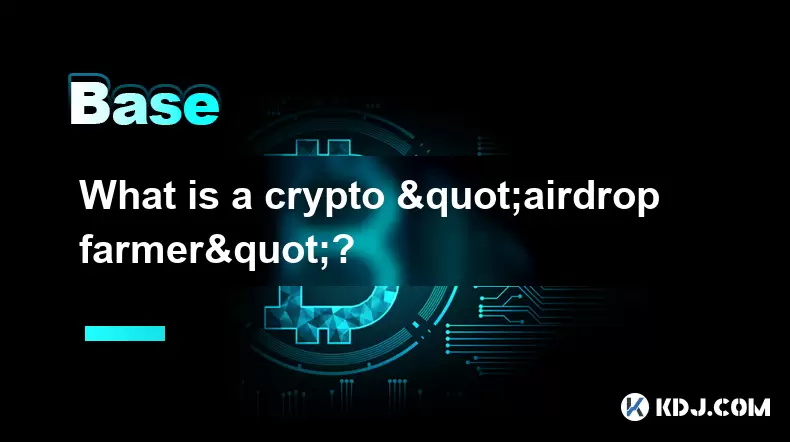
What is a crypto "airdrop farmer"?
Jul 24,2025 at 10:22pm
Understanding the Role of a Crypto 'Airdrop Farmer'A crypto 'airdrop farmer' refers to an individual who actively participates in cryptocurrency airdr...
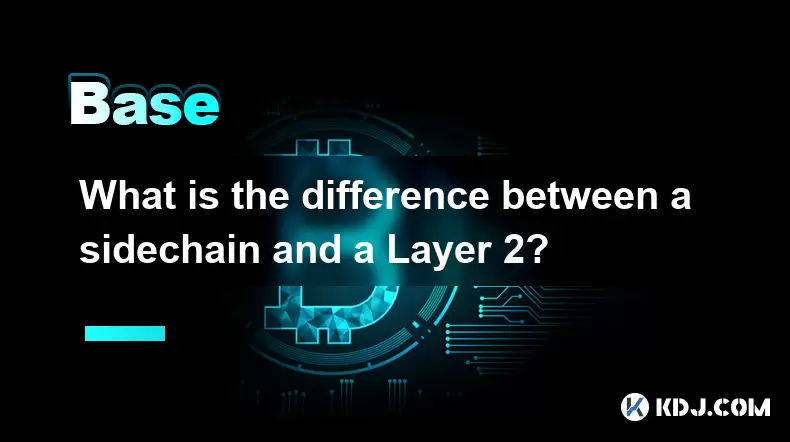
What is the difference between a sidechain and a Layer 2?
Jul 20,2025 at 11:35pm
Understanding the Concept of SidechainsA sidechain is a separate blockchain that runs parallel to the main blockchain, typically the mainnet of a cryp...

What is the Inter-Blockchain Communication Protocol (IBC)?
Jul 19,2025 at 10:43am
Understanding the Inter-Blockchain Communication Protocol (IBC)The Inter-Blockchain Communication Protocol (IBC) is a cross-chain communication protoc...
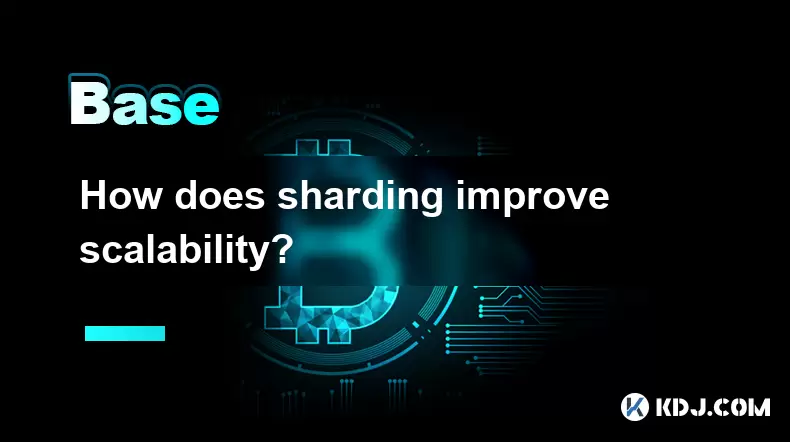
How does sharding improve scalability?
Jul 20,2025 at 01:21am
Understanding Sharding in BlockchainSharding is a database partitioning technique that is increasingly being adopted in blockchain technology to enhan...

What is the difference between CeFi and DeFi?
Jul 22,2025 at 12:28am
Understanding CeFi and DeFiIn the world of cryptocurrency, CeFi (Centralized Finance) and DeFi (Decentralized Finance) represent two distinct financia...

How to qualify for potential crypto airdrops?
Jul 23,2025 at 06:49am
Understanding What Crypto Airdrops AreCrypto airdrops refer to the distribution of free tokens or coins to a large number of wallet addresses, often u...

What is a crypto "airdrop farmer"?
Jul 24,2025 at 10:22pm
Understanding the Role of a Crypto 'Airdrop Farmer'A crypto 'airdrop farmer' refers to an individual who actively participates in cryptocurrency airdr...

What is the difference between a sidechain and a Layer 2?
Jul 20,2025 at 11:35pm
Understanding the Concept of SidechainsA sidechain is a separate blockchain that runs parallel to the main blockchain, typically the mainnet of a cryp...

What is the Inter-Blockchain Communication Protocol (IBC)?
Jul 19,2025 at 10:43am
Understanding the Inter-Blockchain Communication Protocol (IBC)The Inter-Blockchain Communication Protocol (IBC) is a cross-chain communication protoc...

How does sharding improve scalability?
Jul 20,2025 at 01:21am
Understanding Sharding in BlockchainSharding is a database partitioning technique that is increasingly being adopted in blockchain technology to enhan...
See all articles

























































































